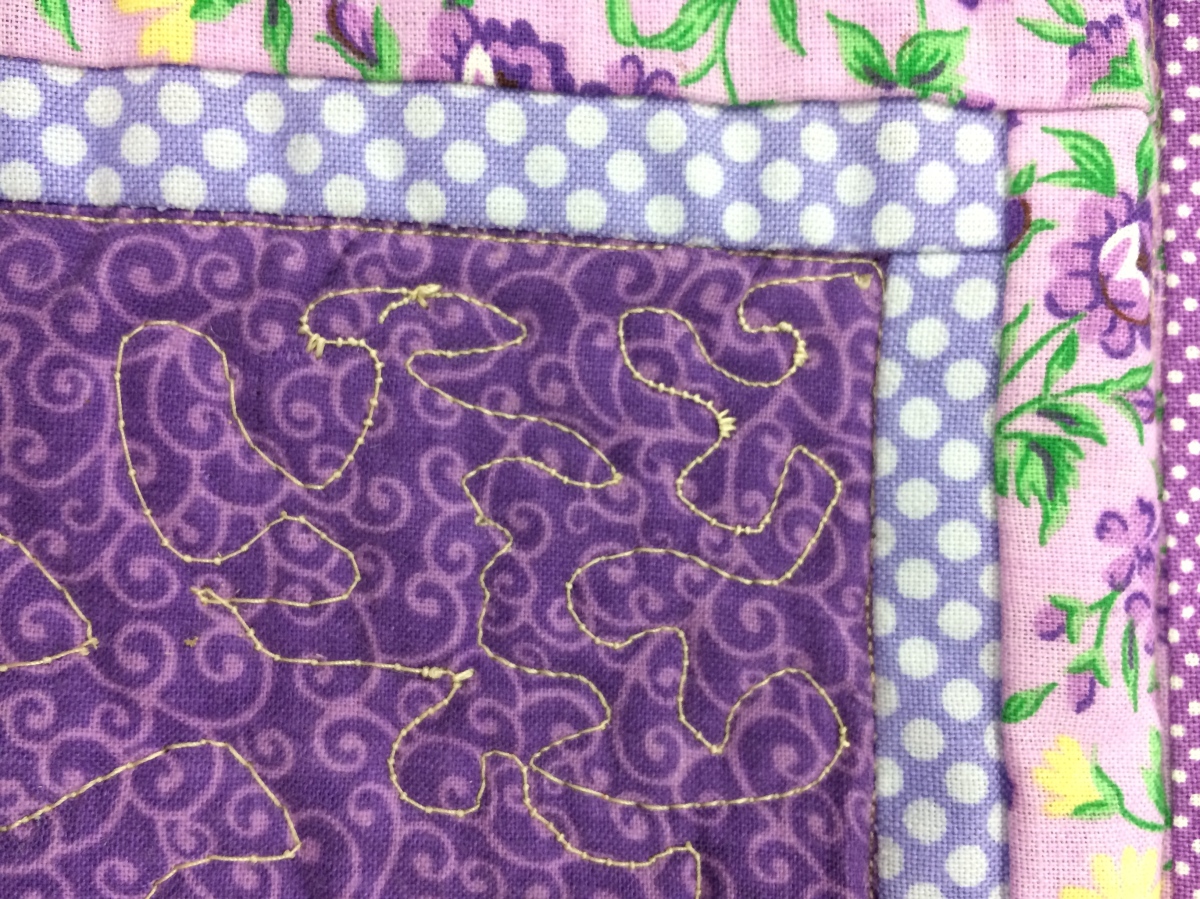Frustration City! Skipped stitches can really make free motion not fun. And it really should be fun. I can’t recommend enough to always test your exact materials and design elements on a test sandwich first before you start on your quilt. Also, fresh needles can solve many problems
Skipped Stitches are caused by a lot of things. But usually the culprit is misthreading or a damaged or dull needle. You might have just put a new needle in the machine and that needle could still have a micro sized burr in a bad spot somewhere. Or maybe you are like me and think you can eke out the whole darn quilt including patchwork and quilting with one needle. Well, that needle is probably the problem. There is a reason that sewing machine makers make the needle so easy to replace.
The needle is easy to replace because we are supposed to do it pretty often.
- Are you sewing with your presser foot down? Often new free motion quilters will forget. If the presser foot isn’t down, then the tension discs can’t help form a stitch.
- Replace the Needle – needles are the cheapest part of your sewing expenses. Try just changing it out. You don’t have to use them, but I like titanium coated needles. I explain why in this post.
- Is your needle the correct size? You choose fabric and thread first, then match the needle to it. Here is more info on Thread Weights and Needle Sizes for Free Motion
- Take the thread out of your machine and clean your machine. Be sure to take the bobbin out for good measure too. Clean it, clean the bobbin area, if you can remove and clean the bobbin casing then do it. Take the presser foot plate off and clean under it. Clean lint off the needle holding metal bar thingy (very technical term there). Clean it all.
- Rethread the machine properly.
- Is your presser foot up before you thread? If you don’t bring up the presser foot, the thread can not get in-between the tension disks. This is a problem as stitches can’t form..
- Is your bobbin oriented the correct way (does it spin the right way once it is inserted in the machine)? If there aren’t arrows stamped in your machine, are you sure you’ve seen the manual to know. One friend actually sewed for years with the bobbin going the wrong way. It was okay for straight stitch, but when she finally wanted to learn free motion quilting, it didn’t work well at all and caused skipped stitches.
- You can look through my troubleshooting posts on this blog and hunt online for answer. These are collated from personal experience, other free-motion quilters, Superior Thread Company, Schmetz Needle Company, and a lot of other sources. This is all common knowledge stuff, no rocket science here or proprietary info. But I hope it helps you. I use my blog as a resource all the time. I love comments too. Please help if you know something else that should be added, or another solution.
I do have a chart in the works that I promise to post in the near future.


I’ve spent some time trying to make sense of sewing machine needle recommendations, so I appreciate your effort to do a mashup of advice on the topic. It does go against the grain for me to throw out a needle I’ve sewn 2 inches with because it may be defective. Have you tried the titanium needles? I haven’t, and wonder if they’re worth the price. As to needle size, I found that my biggest problem has been using a needle that’s too small for my thread.
LikeLike
It does against my frugal side too. I did buy a whole 10 pack of bad needles once (not titanium). Needles are made in factories and so if they are being made defectively, you might get more than just one in a row of them. My experience was that the bad needles had a teensy burr on one edge of the groove. So when I freemotioned in a particular curving motion which caused the thread to rub on that part of the needle.. it would screw up. Talk about a frustrating afternoon!
I really like the titanium coated needles. I even wrote about it. Here is a link to it.
LikeLike